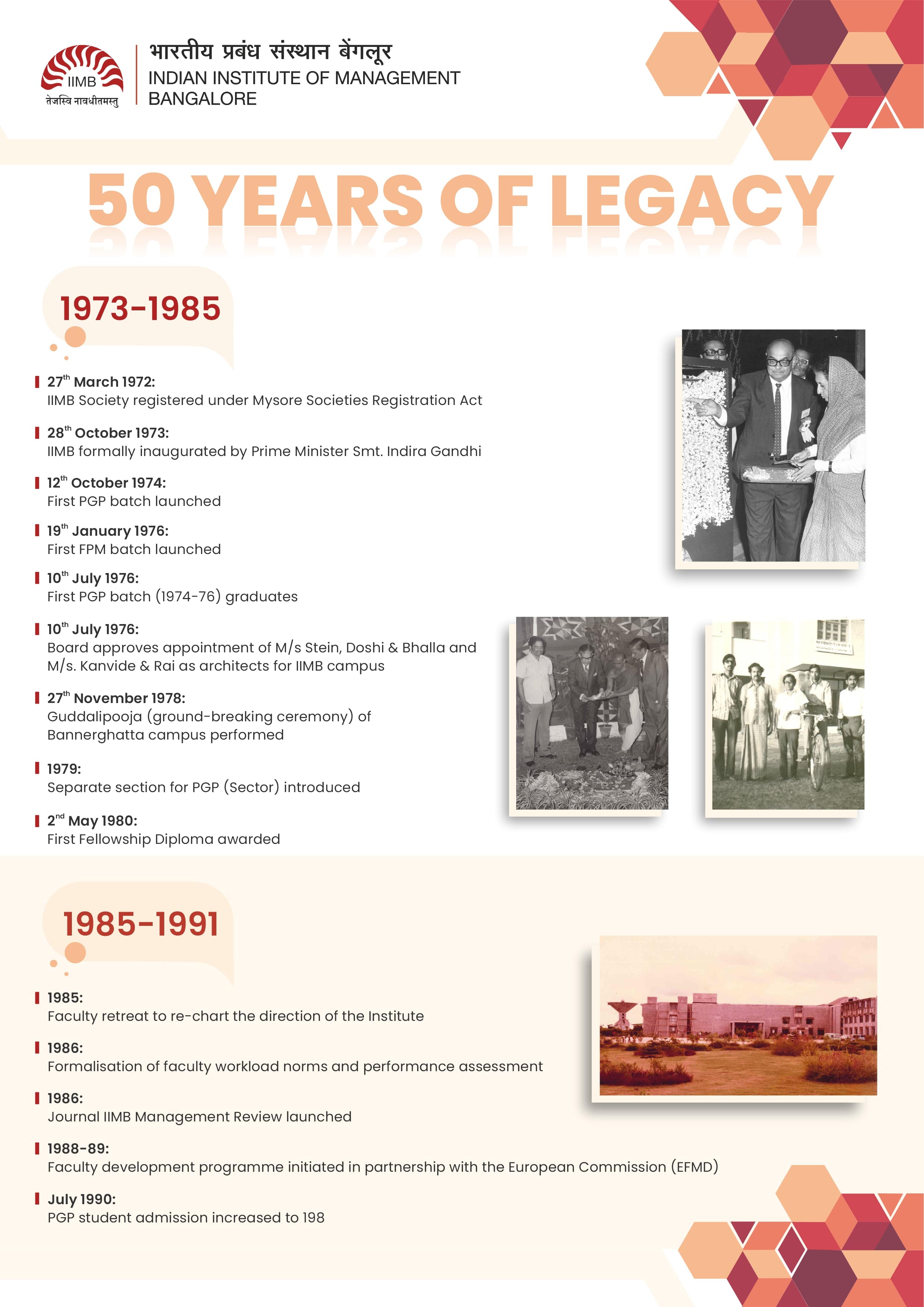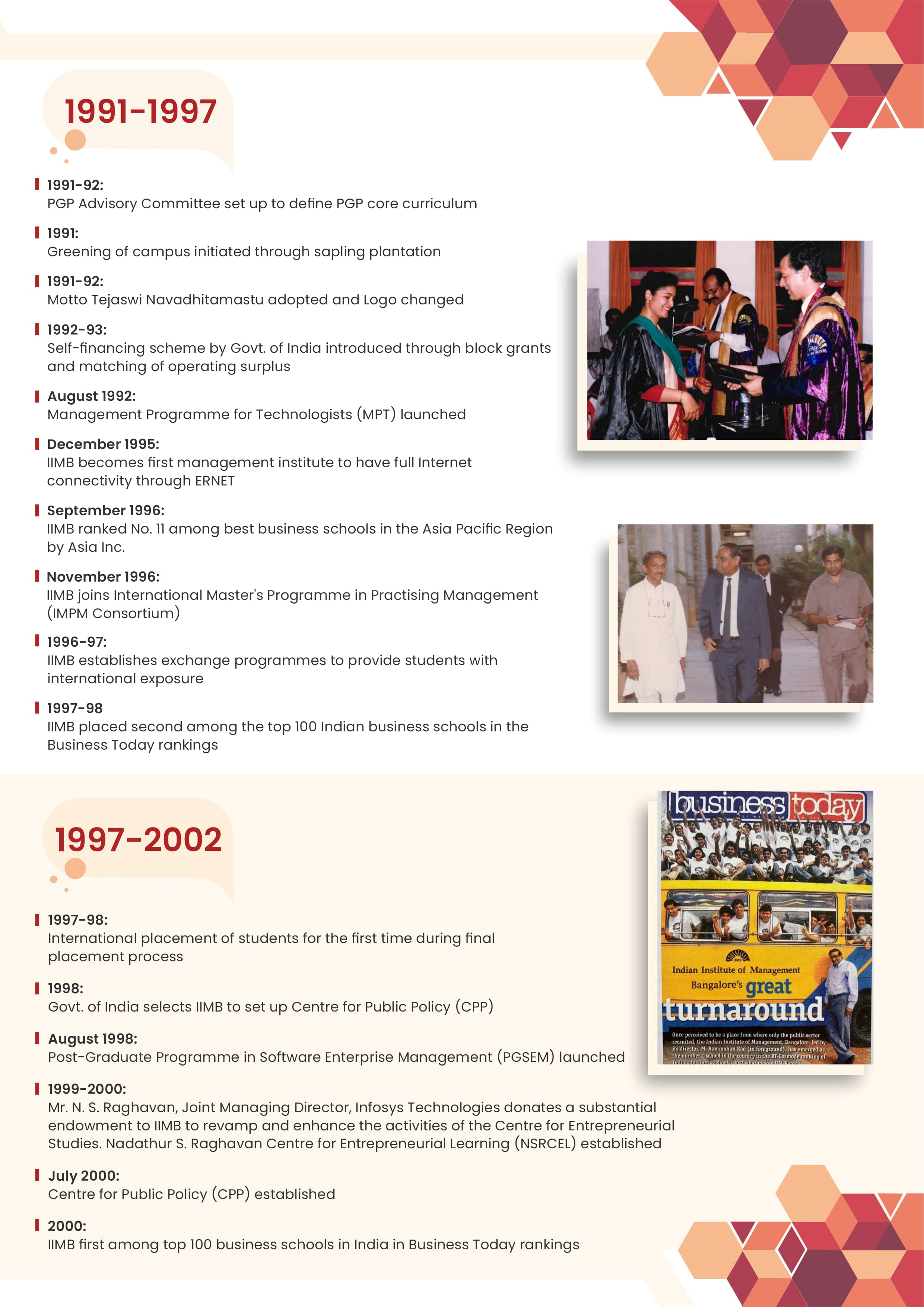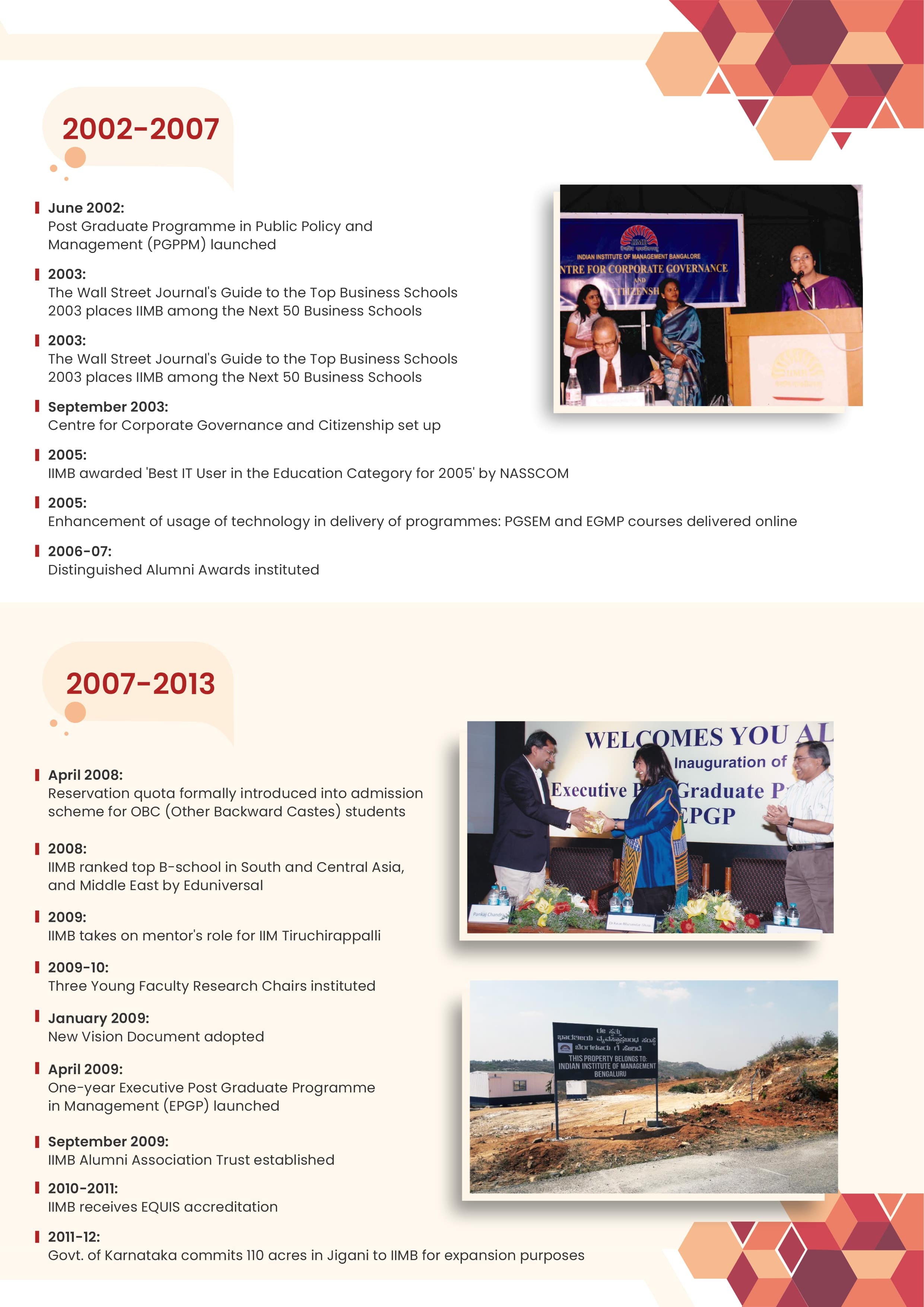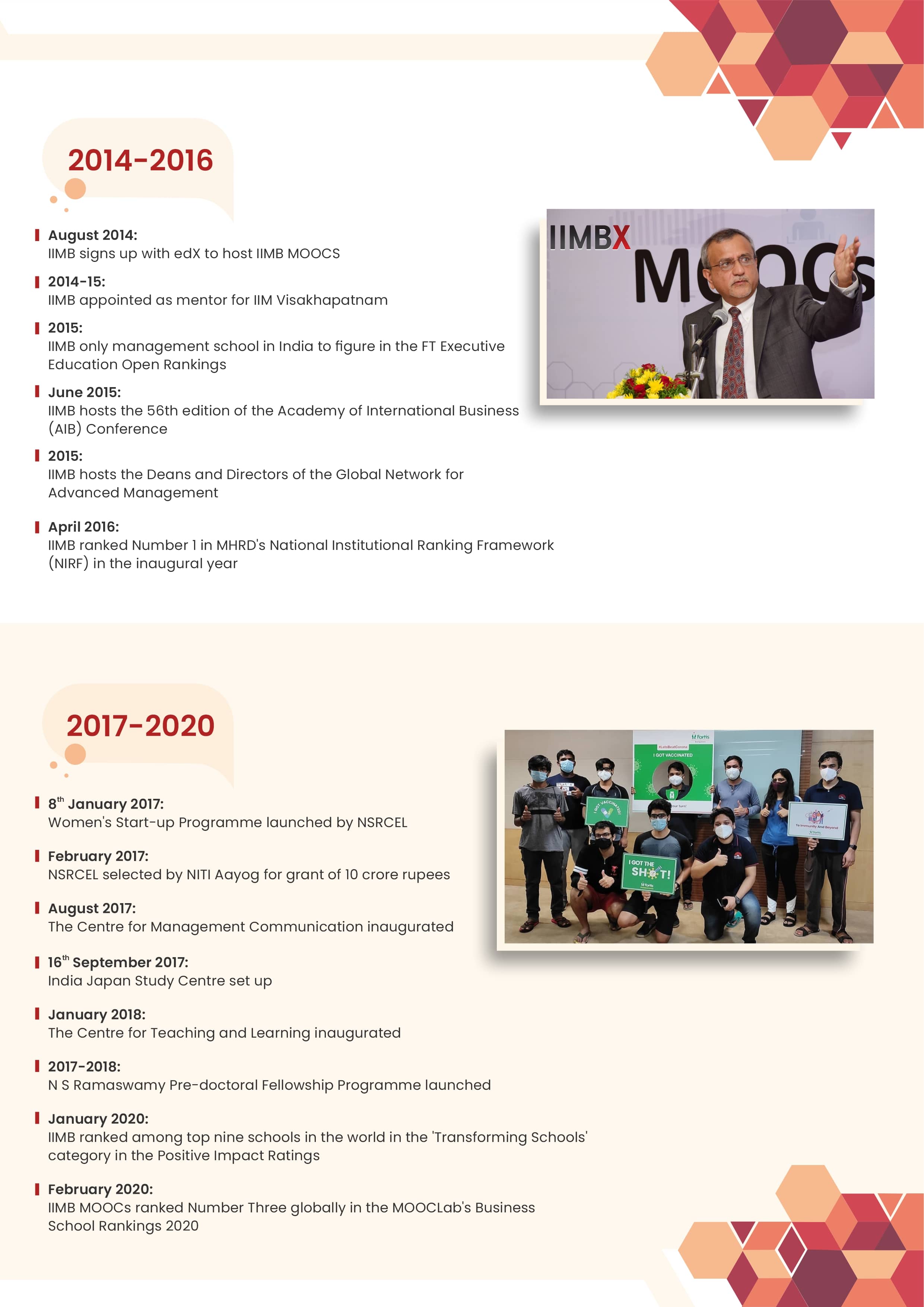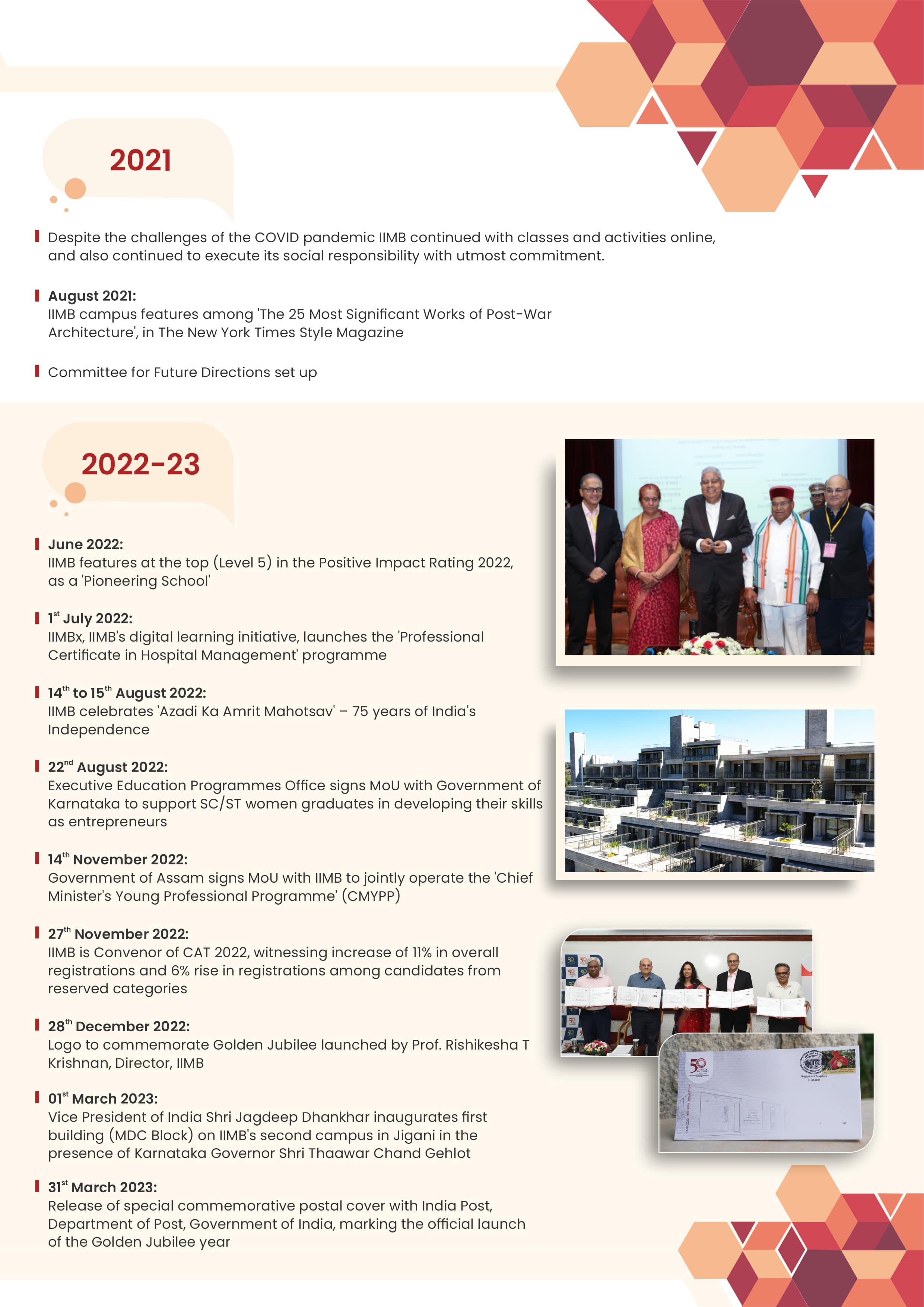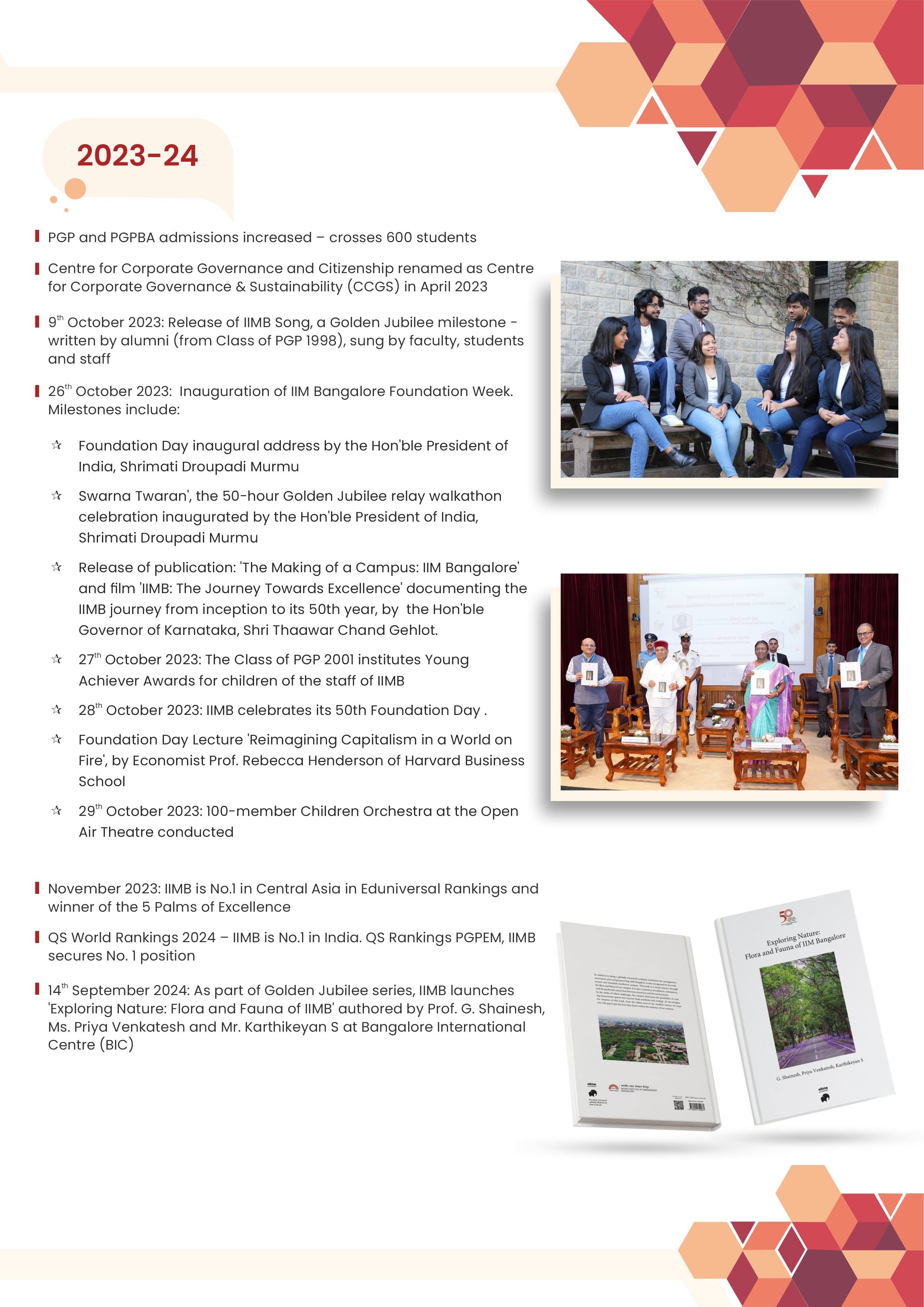History
After 1947, the Government of independent India focused on the development of indigenous science and technology. As a technology base was being created, it became clear that the country needed to simultaneously augment management talent and resources. This led to the creation of the Indian Institutes of Management in the country. The Indian Institute of Management Bangalore was established in 1973.
In an effort to capture the evolution of IIMB and to recount the history of the Institute, the IIMB History Project was established in 2017. For more details on the History Project and its activities, please click here!
click here to visit the archives website
Growing with IIMB I G. V. K. RAO
Two institutes of management were started by the Government of India - one in Ahmedabad and the other in Calcutta (now Kolkata). The Government of Karnataka was keen that a similar institution should be started in Bangalore (now Bengaluru).
The first two Institutes were based on models in the US and fulfilled the need for trained managers, mainly in the private sector. Persons trained in IIMA and IIMC could not, for various reasons, be absorbed into public sector institutions. One of the main reasons was the low scale of remuneration in the public sector, compared to the private sector, especially in multinational organizations. This even though, at one time, the public sector was in the commanding heights of the economy. A number of public sector institutions were started and large investments made both by the central and state governments, respectively.
It was, therefore, felt that the institute to be set up in Bangalore should be developed in such a manner as to prepare competent individuals who could fulfill the needs of the public sector. The institutions targeted were units like electricity boards, water supply boards and HMT, ITI, BEML, road transport, corporations, municipal corporations, and the like. Considerable investments had been made in such sectors and they were desirous of competent people to manage the affairs.
The idea was to offer management courses in the proposed institute in Bangalore to bright young people, who were expected to occupy important managerial positions in the public sector. The matter was discussed by various ad hoc committees constituted by the state government, and was taken up with the Government of India.
For the proposed Bangalore institute, the Government of Karnataka offered 100 acres of land free of charge and a contribution to the corpus of Rs. 30 lakhs. Discussions were held with Dr. L. S. Chandrakanth and Mr Ravi Mathai.
Mr. T. A. Pai agreed to be the first chairman. N. S. Ramaswamy, who was then director of NITIE, was appointed the first director. Considerable preliminary work was done, and the new institute was inaugurated by Mrs. Indira Gandhi, the then Prime Minister, on 28 October 1973.
The institute was started in St. Joseph's College of Commerce, and some other buildings, which were rented. A number of difficulties were encountered, but were fairly well-handled. The most important challenge was the reluctance of public sector institutions to recruit graduates who emerged from the IIMB despite their orientation towards the public sector.
The land offered by the state government was selected on Bannerghatta Road in Bangalore and given free of charge to IIMB.
Stein, Doshi and Bhalla were appointed as architects and very good plans were prepared.
I have had the privilege of being associated with the IIMB during the first few years, as a member of the board of governors and as chairman between 1991 and 1996.
Mr. N. S. Ramaswamy as the first director did considerable work for the organization of the institute. Professor Philip handled some other problems like labour discipline and related matters. Dr. K. R. S. Murthy succeeded Professor Philip from 1992 to 1997 and is mainly responsible for building an institute of excellence. It has been a steady tale of considerable achievement.
The intention to cater to the needs of the public sector could not be fulfilled. So, gradually, the institute started to meet the changed demands of the Indian situation. By 1991, the ideas of development also changed in the country, and liberalization and globalization were accepted as the need of the hour, which had its own impact on the manner in which the IIMB has functioned over the past 7-8 years. This cannot be considered a deflection from the original intention. It is an organic change brought about by changing circumstances which, if anything, shows the institute's maturity to adapt to the demands of the times.
The campus has developed well. A large number of trees have been planted and a pleasant atmosphere created. The library is very well planned. The classrooms and the dormitories conform to the master plan.
An IIMB product is bound to be good material, trained well, with the basics of good citizenship nailed in place. This is very much in keeping with the aim of the institution, which is ‘To be a centre of excellence, select the best, turn out first-rate professionals and responsible citizens and expect them to function well’.
From: Management Perspectives - Essays on Managerial Priorities and Management Education; In Commemoration of the Silver Jubilee of the Indian Institute of Management Bangalore.
Published by Macmillan Indian Limited, 1999
